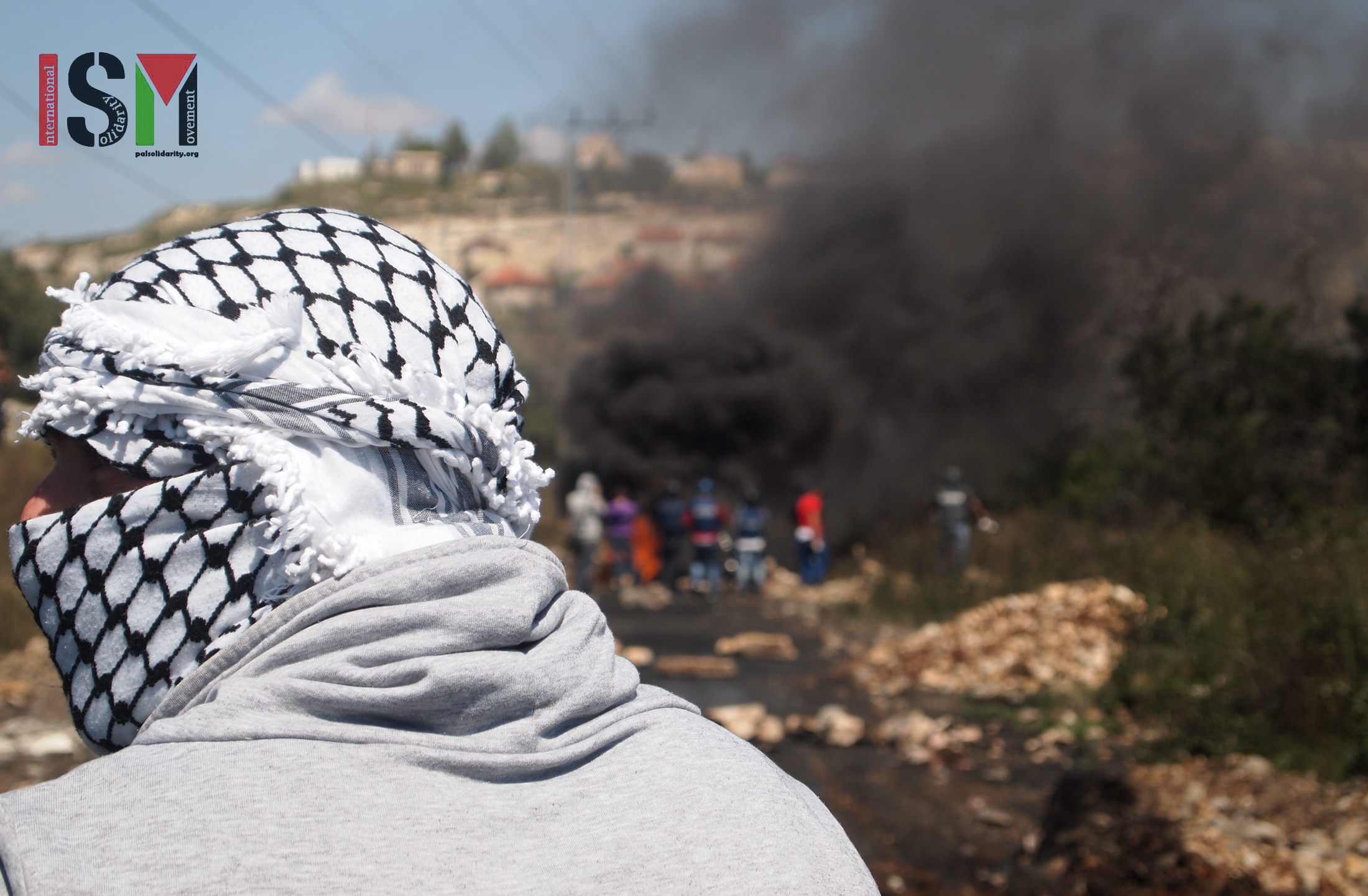Tag: Live Ammunition
-
UN affects Kafr Qaddum’s demonstration
1st May 2015 | International Solidarity Movement, Huwwara Team | Kafr Qaddum, Occupied Palestine Today’s demonstration in Kafr Qaddum was met with live ammunition, rubber coated steal bullets, teargas and stun grenades. There was a large presence of Palestinian and international protestors. The Israeli forces shot two young men in the leg. UN observers were present. Before prayer…
-
In photos: Demonstration in Nabi Saleh
26th April 2015 | International Solidarity Movement, Ramallah Team | Nabi Saleh, Occupied Palestine ISM is bringing the story of Friday’s weekly demonstration in Nabu Saleh, 20 kilometers northwest of Ramallah, the Occupied West Bank, in photos. Israeli forces shot one Palestinian teenager in the head with live ammunition and fired stun grenades at the press.
-
Israeli forces shoots six, teenager shot in the eye in Kafr Qaddum
24th April 2015 | International Solidarity Movement, Huwwara Team | Kafr Qaddum, Occupied Palestine Yesterday’s Friday demonstration in Kafr Qaddum continued the trend of senseless and extreme violence from Israeli forces against Palestinian villagers, as the ISM has reported on numerous occasions. Even before the villagers had begun their march, one Palestinian teenager was shot in the…



